Renaissance woman: Meet European 1500m silver medallist Georgia Bell
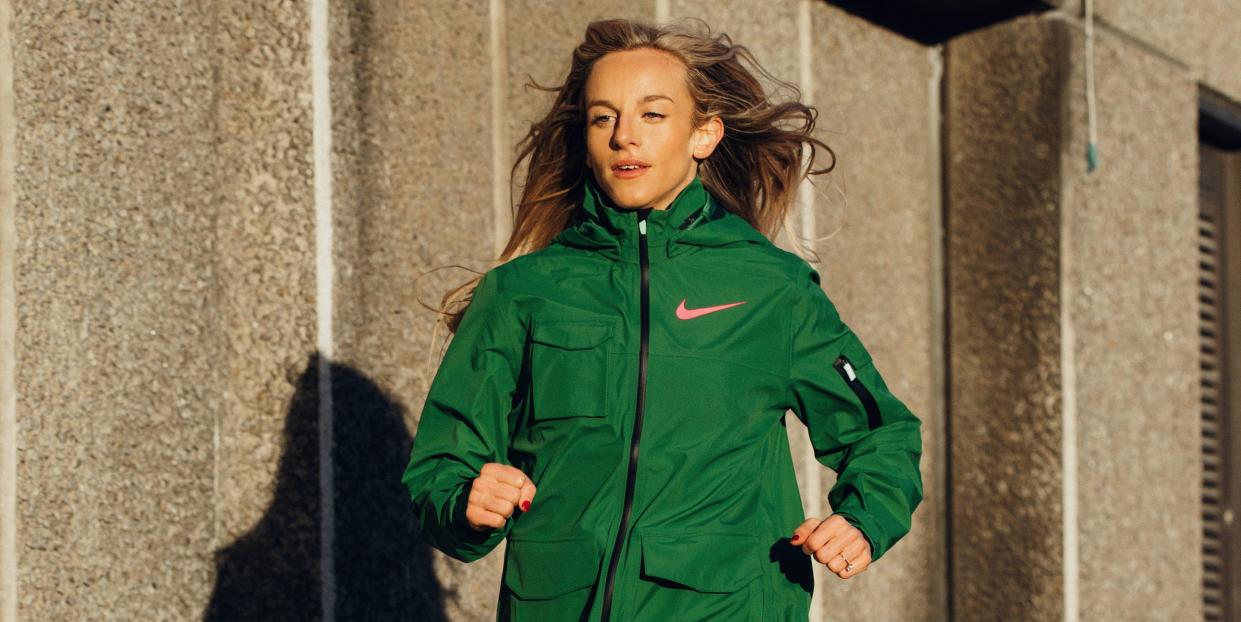
Comebacks don’t come much more extreme than Georgia Bell’s. The promising junior athlete gave up running entirely after a stint on the US collegiate scene left her injured and out of love with the sport. Embracing the fun of life away from athletics, embarking on a successful career and enjoying bike rides with her fiancé, she never imagined competing again. Then came the pandemic, parkrun and, five years after she last set foot on a track, a 5K on a whim in borrowed spikes.
Since then, a meteoric rise has seen her become the British indoor 1500m champion this February, then go on to finish fourth in the World Indoor 1500m final in March. Then, last weekend (9 June), she took 1500m silver at the European Indoor Championships in Rome.
Remarkably, the 30-year-old has managed to achieve all this after years away from running, while still holding down a demanding full-time job in cyber security. She’s now taken a sabbatical from work, signed a sponsorship deal with Nike and has set her sights firmly on this year’s Olympics in Paris. Here, she shares the story behind her remarkable return.
Runner’s World: Your stratospheric rise seemingly came out of nowhere, but you were actually an outstanding junior runner. Can you tell us about those days?
Georgia Bell: ‘I first got into running just through school sports day – I beat all the boys and one of the parents was like, “Better get her down to a running club!” So I went into the club system and had some good success as a junior. The highlights were winning English Schools at 14, then being the top ranked 800m athlete at under-15 and under-17. Those were the glory days.’
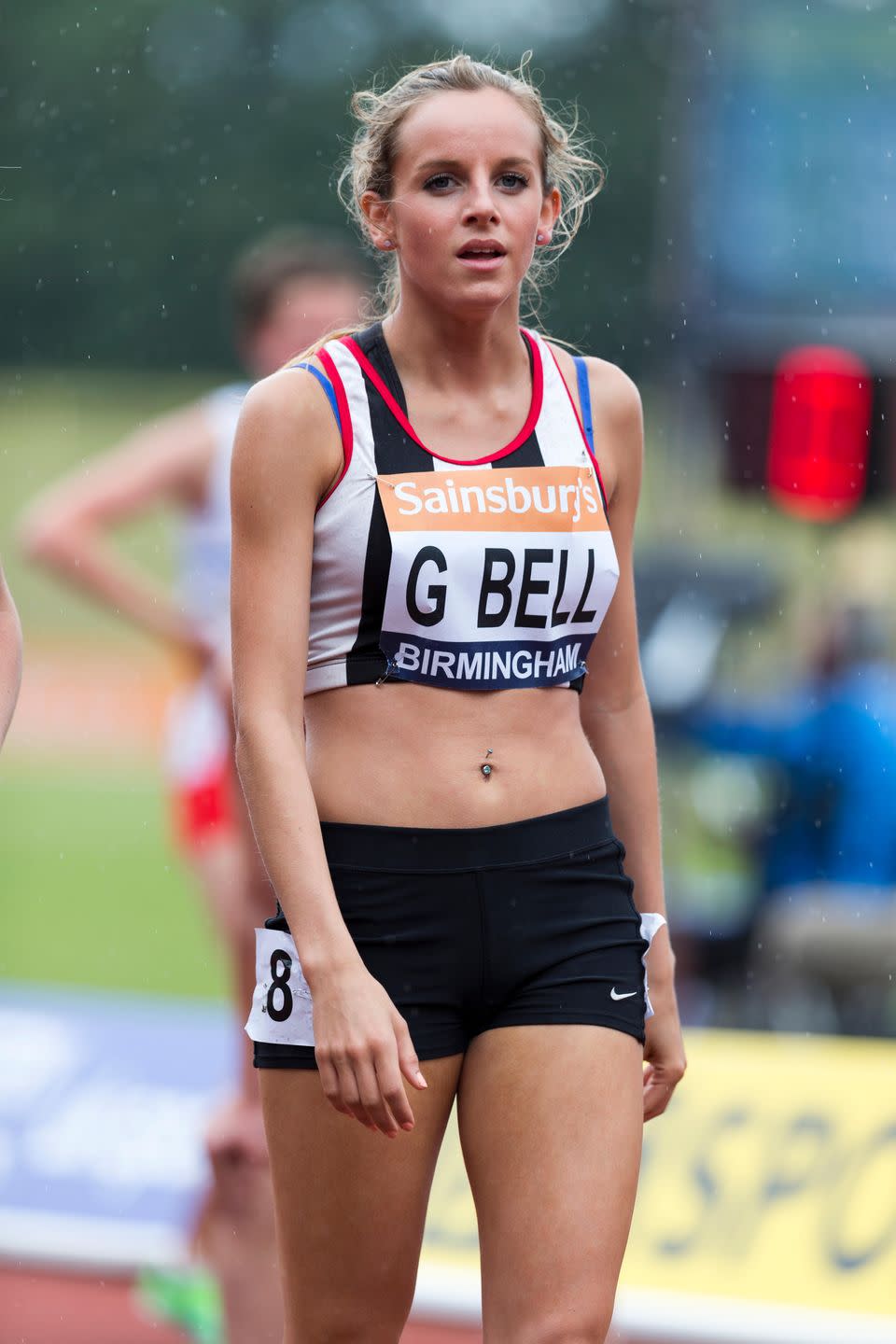
RW: Was the expectation you would become a star athlete?
GB: ‘I think so. When you do something young and everyone sees you’re quite good at it, you start to see it as your identity, and that you’re going to continue on that trajectory. Doing so well in my teenage years, I definitely thought running was going to be part of my life forever. Then obviously I had a big break. But I’m happy to come back now.’
RW: Before we get into that incredible comeback, what was it like at that young age to have so much expectation around you? Particularly competing as a young athlete with the impact of puberty on your performance coupled with the pressure to excel?
GB: ‘It’s strange. On the one hand, it’s great for young athletes because it gives you that confidence that has impacted other parts of my life, like work and relationships. But once you start performing well and once you’ve won a championship, if you don’t win that championship every time, then that’s kind of a downgrade. So it’s a lot to adjust to, and then, obviously, bodies change and your performance can change along with that. It’s a different experience for women versus men. You have to be quite mature and for a lot of people that’s hard because it’s the age where you’re probably at your most immature and going through the biggest changes.’
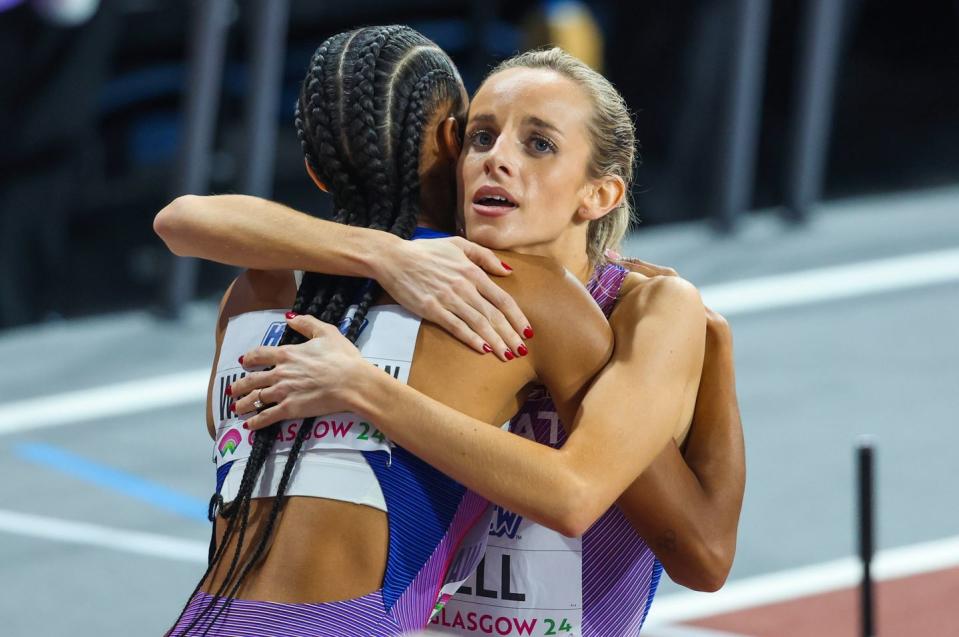
RW: You went over to the University of California, Berkeley, but were frequently injured and seemed to fall out of love with running. What went wrong? And what have you learned from it?
GB: ‘Berkeley was amazing for what I wanted from it. I wanted to live abroad – I wanted to experience the NCAA [National Collegiate Athletics Association], which is an amazing league and makes you feel like you’re a pro athlete while living in California and training with your friends. But the trade-off is that they expect you to race all the time because you’re a business deal. In the UK, you might say, “My shins are a bit sore, I’ll give this one a miss this weekend”. Over there, it’s a case of, “No, you’re here for two years, we’re paying a lot of money for you, you will race all the time”. They wanted me to peak for and race every season. So cross-country, indoor and outdoor. And I did well in cross-country, but then I was injured for the bit that I actually wanted – the indoor and outdoor. I was just forever coming back from injury. The times when it was going well, it was great, but I never ran faster than I did in the UK. So, from a running perspective, obviously not an improvement.
I learned from that experience that high mileage isn’t everything. It was a very high-mileage philosophy out there. It was just crack on, do as much running as you can and sink or swim. And I sank. A lot of really good British runners don’t go down the US college path because it’s got that reputation that you’ll get injured – that you’ll have to race a lot. So, if you’re going for Olympic level, I think it’s best to stay in the UK and have a more personalised programme.’
RW: When you stopped running after Berkeley, did you think it was truly the end?
GB: ‘Yeah, absolutely. I thought I’d be one of those people who would do a marathon when I was 50 and be like, “Oh, I used to run back in the day.” Racing had just gone on such a downward trajectory for me. When I finished my last race, I thought, “I’m so happy that I’m done, I’m ready to just be a normal person, to go into the working world.” I didn’t run at all for a year – just completely stopped. After that I might have gone for the odd run once in a while if someone wanted to go for one, but I’d completely fallen out of love with it.’
RW: As an active person, did you switch to anything to replace your running?
GB: ‘I switched running for normal life. I went the opposite way for about a year. Everything changed. I looked a bit different – I gained a little bit of weight. I was working in my first job in San Francisco and living a really fun life, travelling all over the US and experiencing all the things I had to say no to previously because I was racing or training. I was just like, “Yeah, we can go away for the weekend, we can go to Coachella, we can do whatever.” So all the fun stuff – and I really enjoyed it for a year. Then I started to work exercise back in with some classes and the odd run. And then when I moved back to the UK, I got into cycling, which was a big part of coming back to fitness again and is still a big part of my training.’
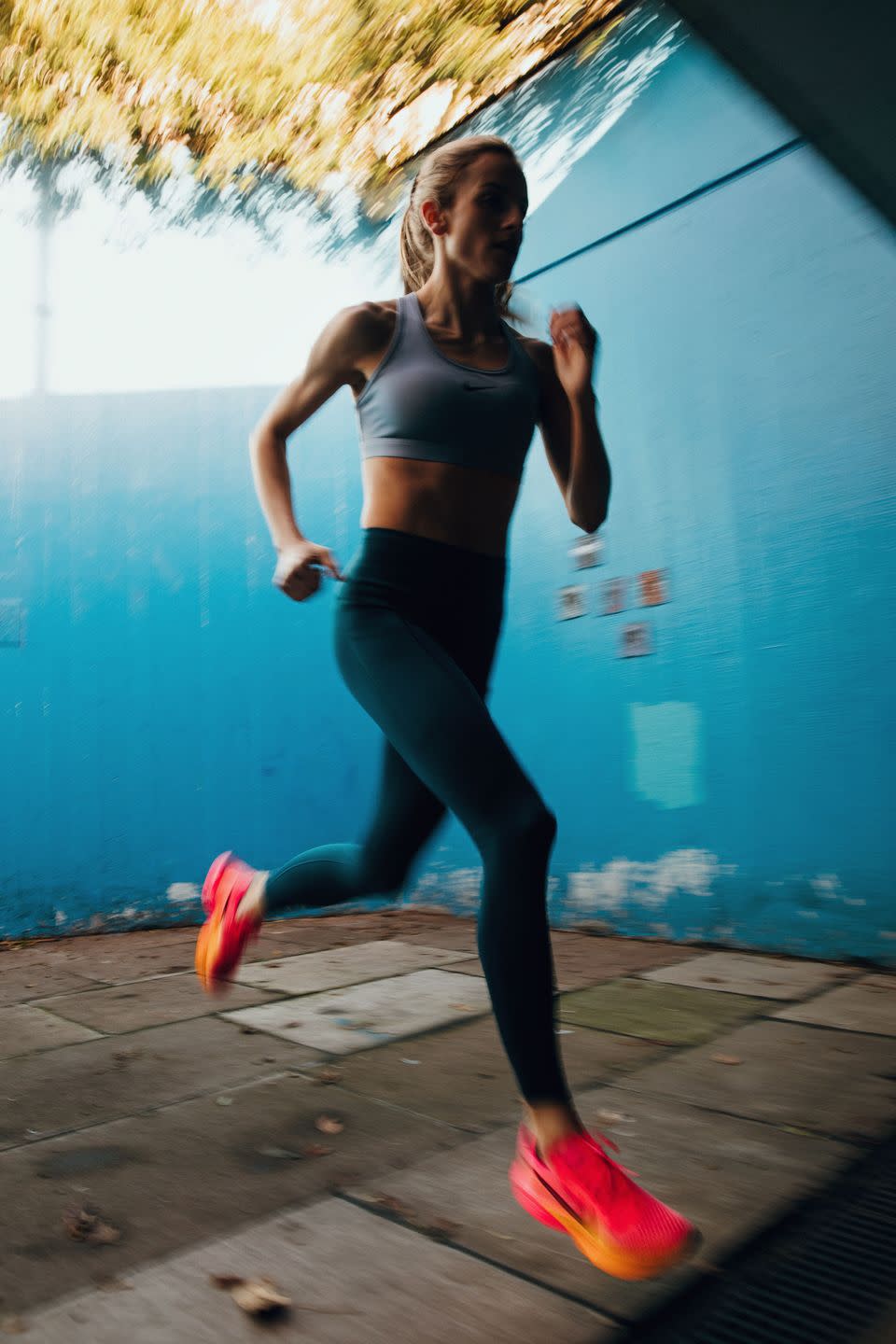
RW: Let’s talk about the comeback – did it really start with the pandemic and a parkrun?
GB: ‘When Covid hit and running was pretty much the only thing you could do, I started training a lot harder. I got that competitive side back – I wasn’t just going for a plod, I was thinking, let’s see how hard I can go for two miles, three miles, or doing tempos. Then I thought I’d hop into a parkrun a few friends were doing. I ran 16:10 or something and thought, that’s actually okay. That was the point where I said I’m actually in decent shape, I might dabble with getting back on the track, and I signed up to my first track race. It’s called the Comeback 5000, so it was like it was made for me. That was two years ago, it was the first time I’d stepped on a track in five years and I realised I’d missed the feeling, and that I was ready to race again. Things have escalated since then.’
RW: So before that first track race, you didn’t have a full comeback in mind?
GB: ‘I just knew this race, the Comeback 5000, was right by my house. I had friends running it and they brought a pair of spikes for me. It was five years since I’d stepped on a track, so it was really weird, and I’d never done a 5K on the track before. But I just kind of went out on a whim, thinking what’s the worst that can happen?’
RW: Then you got back in touch with your old coach, Trevor Painter, which seems to have worked out pretty well.
GB: ‘So Trevor was coaching me when I was running my best in England – he got me from 2:08 for the 800m to 2:03 within six months. It was at the time I was graduating from university and I told him I wanted to go to the US. He said, “I support you if that’s what you want to do, but I think we could get you to be such a great runner if you stayed here.” We’d stayed vaguely in contact for big life events like when he had his daughter, but after the Comeback 5000 and a couple more races that summer, I sent him a message to say, “I’ve got back into running and here’s what I’ve done on my own this summer – what do you think about us working together again?” Obviously I knew he’d done amazing work with Keely [Hodgkinson], Sarah Healy and all of the athletes in that group who are just running incredibly. Luckily, he was just like, “Yeah, it will be great to have you back,” and it’s been going really well. I think they’ve got the best programme ever for training, and him and Jenny [Meadows] – his wife, who is [a retired] athlete – are a great team. I’m very happy he took my call.’
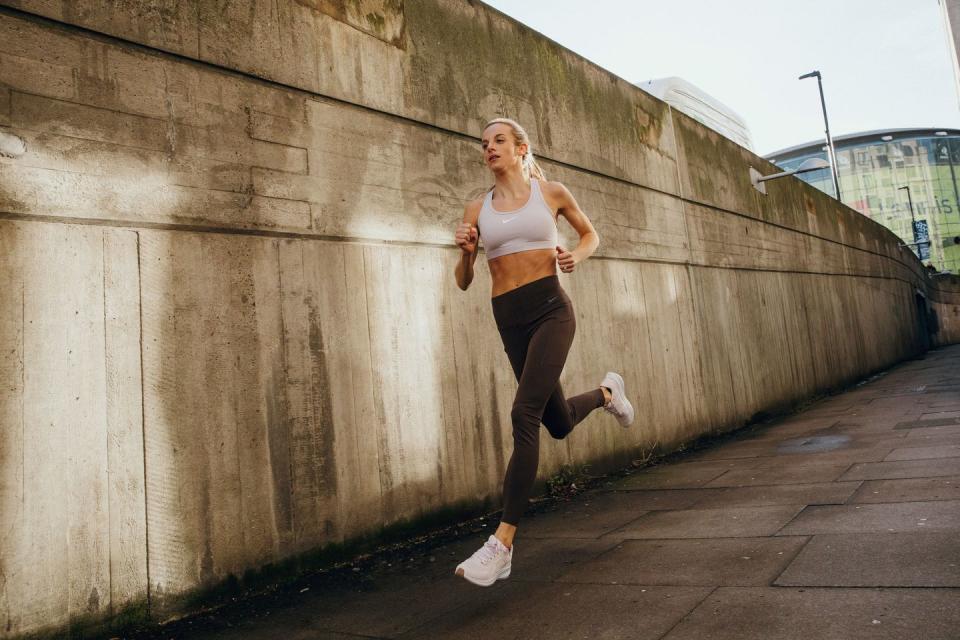
RW: And how have you found the transition to being a professional athlete after so long out of running?
GB: ‘I was really naive to all of that because I’d been out of running for so long and had never actually done it at a professional level. Even stuff like realising you need an agent to get you into races – you can’t just rock up. Trevor and Jenny put me in contact with an agent and then after I started running well earlier this year, I managed to sign with Nike. I was naive to all of that – I wasn’t expecting to get any kind of kind of sponsorship, but the results, especially the World Indoors, mean that everything’s changed very quickly.’
RW: Your indoor results have been spectacular this year. Do you have a real affinity with indoor racing?
GB: ‘Yeah, I just like indoors. I like that it’s more compact and you’re really close to the crowd the whole time. More can go wrong because there are really tight turns and you have to think a lot more about your tactics. I find it really fun to mix up the racing element of it and I’m also not afraid to front-run, which is sometimes a bit of a risk when you’re outside and you’re battling the elements, but indoors when that’s less of a factor and when having the inside line is so important, I like that style of racing. Then at the first race of this year in Dortmund (a World Athletics Tour Bronze event), I ran 4:03 for the 1500m and that kicked off a series of events – winning the British Champs in Birmingham and then [going to] the World Indoors. It was all just so much fun. That’s my memory of it.’
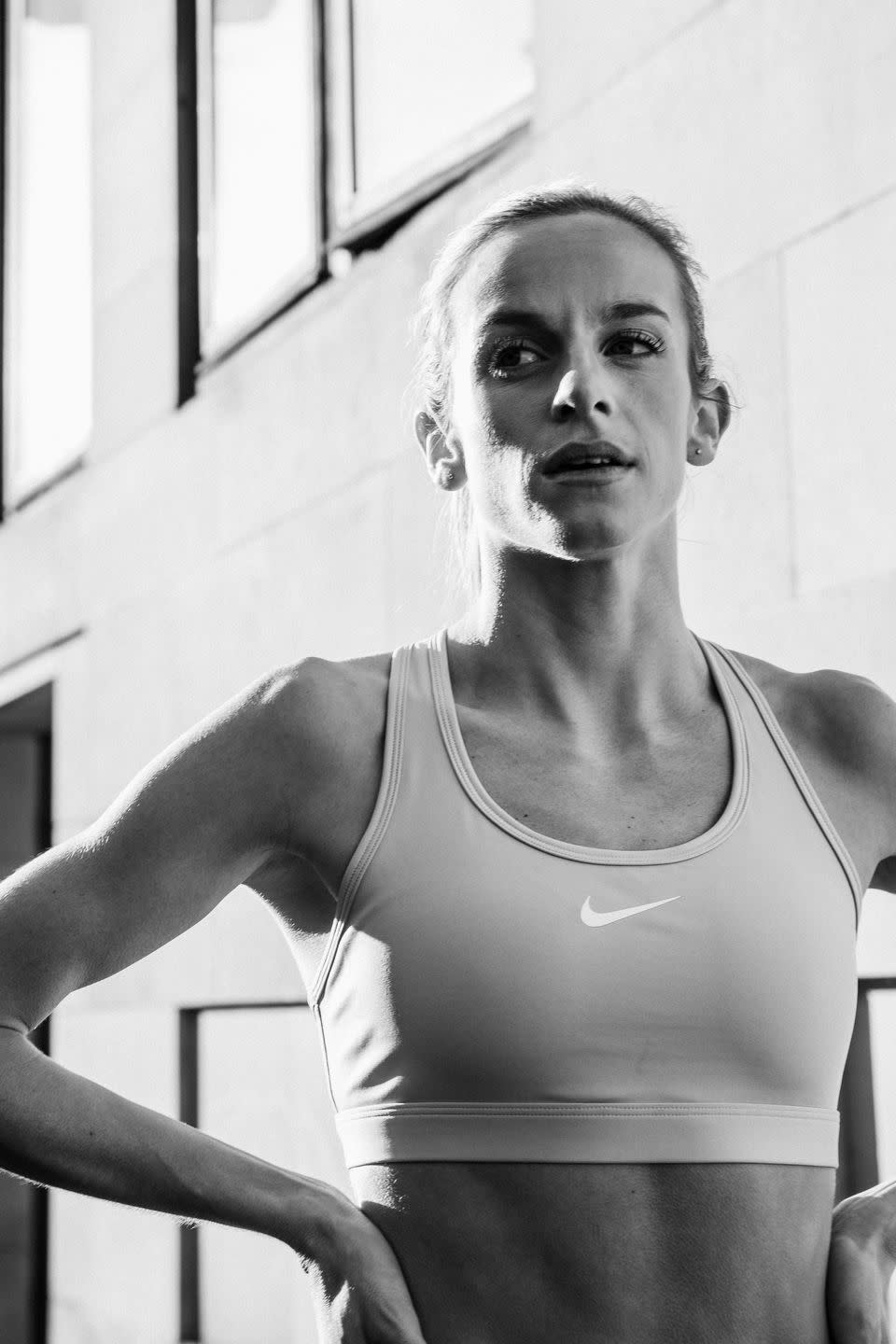
RW: Does having been out of running for so long give you a different perspective and a different appreciation of everything you’re achieving now? Almost like it’s all something of a gift?
GB: ‘Yeah, that’s exactly how I feel. I think the perspective that brings to racing is so good because I’m not financially reliant on it – I’ve had a career and I’ve come back into running just because I really like it. I go into every race thinking I want to grab every opportunity, not taking anything for granted, and I’m not afraid – I’ll just go for it and whatever happens, happens.’
RW: Your comeback has happened while you’ve still had a full-time job… how have you managed to fit it all in?
GB: ‘I’m on a sabbatical as of 1 May, but it’s been a lot. My social life has completely gone. I work remotely 95% of the time, which makes a huge difference because I don’t have to do two hours of commuting every day and that makes training possible. I’ve got into the habit of it, but it means a lot of waking up early to fit in training before work. It has also meant a lot of training on my own because people are on different schedules. It’s a lot of time management, basically. For my cycling before work, it’s 5:30am or 6am starts. It’s really hard to do track sessions before work, but sometimes I’ve just had to do them on those days.’
RW: Cycling has become a big part of your life since returning from the US. How did you get into it?
GB: ‘My fiancé is a big cyclist and when I kept getting injured, he said, “Just get a bike and we’ll go out on rides all the time”. So I got one in lockdown and then got really, really into it, and very into Zwift racing, too. Cycling is quite a social thing, meeting up with people for group rides. I was finding that you can be out on the bike for hours in a way that I’d never be able to do with a run, and I was gaining fitness through that. Then I also did a bit of competing, with things like the duathlon, where you’re mixing cycling and running, which I found really fun. And then more of the cycling for fun stuff, like riding up Mont Ventoux [in the south of France] – it’s a big physical challenge and it’s still competitive, but it’s different from running. So it keeps it fresh, while contributing to your fitness.’
RW: How do the training benefits of cycling stack up against the negatives? Presumably your coach – and your hip flexors – don’t like you to spend too much time on the bike?
GB: ‘Tight hip flexors are definitely a negative. With some of the circuit drills we have, you can tell I’m a cyclist because I just can’t do the drills. The benefit is, I can keep my running mileage low but still have a big cardio effort going through the weeks. My usual mix is to run about 30 miles a week and cycle about 100. Also, Zwift racing gets you really fit. Those races are so hard.’
RW: Thirty miles a week is a pretty low number for an elite athlete – how do you structure your sessions?
GB: ‘It’s different in race season, but when we’re not racing and just training, with Trevor we do four hard sessions a week. What works really well for me is that Trevor is all about the intensity. He’s not all about high mileage. A lot of coaches build fitness through miles, miles and more miles, but I can’t do that. From the number of stress fractures I’ve had in the past, I’ve noticed that whenever I go over about 35 to 40 miles, I always get problems. It works so well with Trevor – we’ll do a hard track workout, we’ll do a hard tempo workout, we’ll do some hills, we’ll do a change-pace run, we’ll do some fartlek. Quality work, basically, then super easy runs – really slow, low heart rate runs – just to recover between the quality sessions.’
RW: What advice do you have for everyday runners looking to get faster?
GB: ‘If you’re trying to get faster, you have to bring intensity into your training. You need to ensure that at least once a week, ideally twice, you’re doing sessions where you’re gasping for breath – you’re really getting your heart rate up. So, if you’re focused on the 5K, think 5 x 1km reps instead of just doing a 5K run. And for shorter distances like the mile, think about doing 200m reps as fast as you can with short recoveries once or twice a week.’
RW: The World Indoors in Glasgow was a really great performance for you in a stacked field. How did you feel running it for the first time?
GB: ‘It was so much fun. I absolutely loved racing there. It was a little bittersweet because fourth is a tough spot knowing you’re so close to a medal. But it was my Team GB debut and I was really proud of how I raced. It didn’t quite end with a medal, but I was really close for a first time, so it was great racing experience and it was really good fun.’
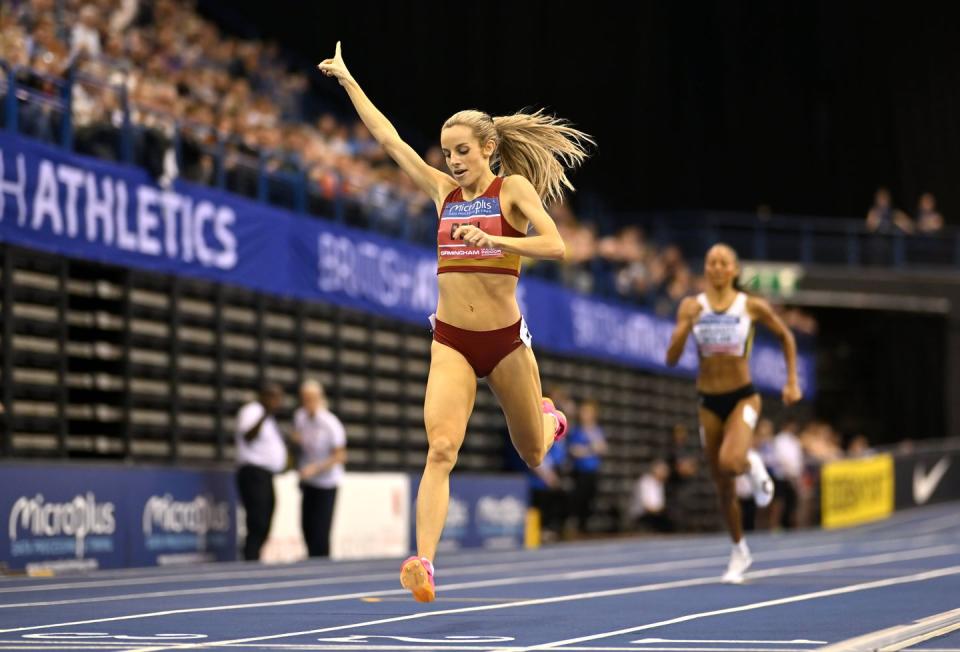
RW: So the next focus is the British Olympic Trials at the end of June – and then, are you daring to think of Paris?
GB: ‘Yeah, I’m aiming for Paris 100%. Work approved my sabbatical, so I’m taking off the summer to aim for Paris. Team GB is so stacked – there’s so much depth. There are so many great British athletes, but I really believe it’s achievable. If I go for it and don’t make it, that’s fine, but I need to go all in. The first part of the summer is about chasing the Olympic qualifying time, then it’s all about having the race of my life at the British Champs. If I run the time and come top two at the Champs, I’m banked and good to go. If not, there’s that discussion for the third spot. But I came fourth at the World Indoors, so hopefully I’ll be selected for the Europeans in Rome at the beginning of June and I can do well there. I feel things are going well and there’s good momentum and I’m just going to throw everything into it. I haven’t just dared to think about it… I think about it all the time!’
You Might Also Like


